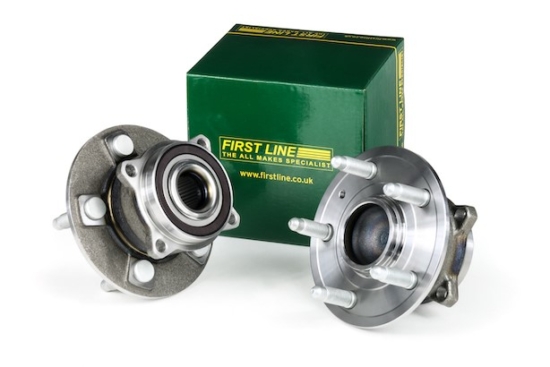First Line provides wheel bearing fitting tips

As there are different generations of wheel bearings, it’s important that technicians recognise and understand the distinctions between them. Premium quality automotive parts supplier, First Line, has therefore provided the following advice on the varying techniques that can be used when fitting them.
Generation 0
Technicians should always follow the manufacturer’s installation instructions, especially in relation to torque settings. Over-tightening can often lead to excessive pre-load, whereas under-tightening can result in excessive endplay, both of which may result in premature failure. First Line also recommends that technicians remove and install the bearings and race using suitable equipment that will provide an evenly distributed force across the whole surface area. Never directly impact the bearing or race as this may lead to irreparable damage.
Generation 1
When press fitting the bearing into the knuckle, ensure that pressure is evenly applied to the outer ring only. When pressing the hub into the inner ring, force must only be applied to the hub and the inner ring.
For applications that have a magnetic encoder built in for the ABS signal, it is vital that the bearing is installed the correct way round. So first, check which side the magnetic encoder is and ensure this side is installed inwards, so that the encoder is closest to the sensor, otherwise it will not function correctly.
Generation 2
As with all installations, always follow the manufacturer’s instructions and use suitable tools to remove and replace the bearing. In this instance, a puller is required to remove the CV joint, hub and knuckle from the bearing.
Whilst installing a new bearing, it is also best practice to check and replace the CV boot, especially on older vehicles or if they have done more than 60,000 miles as this will prevent dust and debris contaminating the CV joint.
Generation 3
Technicians must not use an impact wrench on any of the fastenings of a Generation 3 bearing, as this can cause damage to the bearing/hub assembly. Always use a torque wrench to apply the correct torque value as specified by the vehicle manufacturer, especially on the axle nut to ensure correct pre-load, otherwise it may result in premature failure.
If the bearing has a connected ABS loom, take note of the routing and ensure that when a new bearing is installed, it is mounted and routed in the same way.
First Line also supplies complete kit solutions which can contain several individual components, such as circlips, nuts, washers, bolts, seals, dust caps etc, all of which enable the technician to complete the repair quickly and efficiently the first time, without the need to purchase additional components.
However, it’s not just about ensuring all the necessary components are included, but also that the product is of a premium quality, comparable to, or in some cases superior to the OE specification. One example in the First Line range is the FKB1109 front wheel bearing kit for multiple Audi applications, including A4, A6 and Q5. This kit has been improved over the OE specification by enhancing the surface hardening on the bearing face, so it has a greater resistance to wear, which improves product longevity.
With more than 1,000 references in its wheel bearing range, and a commitment to keeping the range up to date with not only with new model applications, but also new technologies, technicians can be confident when fitting First Line wheel bearings that they are fitting a hassle free premium quality product.



Comments